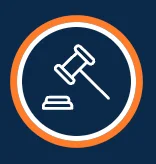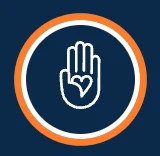Placing a loved one in a nursing home is a difficult decision. You likely want to keep your loved one close but may not have the ability to provide that care, so you spend weeks researching the best care facilities available. One of the questions you may have is how to prevent falls in nursing homes. At Jordan Law Center, our Greenville nursing home abuse attorneys can help you navigate nursing home safety challenges.
How Common Are Nursing Home Falls?
Your first step in learning how to prevent falls in a nursing home should involve learning more about current fall rates. According to the CDC, approximately 14 million (one of every four) individuals over 65 years of age fall each year, and 37% (nine million) of these individuals receive medical care. Of those who fall, 300,000 receive hip fractures and many receive traumatic brain injuries. Seventy-eight per 100,000 (36,000 people in 2020 alone) die in these falls.
In South Carolina, 28.5% of individuals over 65 fell in 2020. With seniors making up 19% of the 5,373,555 residents in the state, approximately 257,682 senior falls occurred in 2020. In addition, 614 falls resulted in death in 2021. Unfortunately, in nursing facilities, falls are more likely and individuals who fall have a greater occurrence of death in nursing facilities as compared to home environments.
How Do Nursing Homes Reduce the Risk of Falls?
Care facilities should consistently evaluate how to prevent falls in nursing homes.
Identify the cause of falls
The first step in reducing falls is identifying the causes and addressing these issues. For example, obstacles in the middle of floors, particularly hallways, can cause falls because patients cannot see them and may have difficulty maneuvering around them. Poor lighting, wet floors, and lack of railings are also dangerous. Patient medication and staff shortages can also indirectly lead to falls.
Keep floors clear
Nursing homes should immediately address any obstructions in walkways, such as equipment or debris. They need to remove mats that have curled up and repair any areas in the flooring that appear uneven or damaged. They should also avoid bringing residents through areas with wet floors.
Avoid the use of restraints
The introduction of restraints may seem like a safety measure, but many residents can actually become injured by these devices. This is especially true of pelvic restraints, posey vests, and lap trays, which cause falls. Residents can fall as they attempt to get out of these restraints.
Pursue open communication and effective teamwork
Nursing homes should pursue a policy of open communication. The staff should share patient details, facility challenges, and incidents with each other. Every member of the staff should know which patients need the most help, particularly those who need assistance standing, walking, or during transfers.
They should also work together in groups to help residents and provide them the support they need. This prevents not only resident injuries but also staff injuries.
Hire and train adequate staff
Many nursing home facilities do not have enough workers. When these facilities have adequate staff, they better recognize when residents need or try to move and can help them. They can also make sure residents have the proper footwear and assistive devices needed to get around safely.
Unfortunately, to increase staff numbers, nursing facilities may hire individuals without proper training or knowledge. This can cause medication errors, abuse, neglect, and falls. These facilities need knowledgeable, trained staff members and should provide extensive and recurring staff training.
Medical testing and exercise
In some cases, falls can be the result of medical conditions, such as syncope. Therefore, facilities should regularly test their residents for blood pressure and balance challenges. Regular testing also allows nursing facilities to quickly begin treating medical conditions that can cause falls.
Nursing facilities need to promote exercise so their residents have adequate muscle strength and balance. Even those who use assistive devices, such as wheelchairs, can benefit from strength training.
Are Bedrails Safe?
As facilities consider how to prevent falls in nursing homes, they need to review current safety research. Bedrails, in particular, have a spotty safety record. According to the National Council on Aging, between 2003 and 2021, 284 individuals became trapped or asphyxiated as a result of bedrails. However, these devices prevent residents from falling out of bed, which is a much greater risk of death.
Therefore, facilities should carefully consider the advantages and disadvantages of bedrails before installing them.
In addition, individuals with Alzheimer’s, dementia, Parkinson’s, multiple sclerosis, stroke, confusion, muscle weakness or control issues, low blood pressure, restlessness, and balance challenges risk entrapment, so the staff should carefully consider the residents’ medical conditions before bedrail installation.
What Should You Do if Someone You Love Gets Hurt in a Nursing Home Fall?
No matter how hard facilities work to prevent falls in nursing homes, some elderly individuals will fall. If someone you love is hurt in a fall, the resident should receive medical treatment immediately and get records of the tests, treatments, and diagnoses.
You should work to gather evidence of the fall immediately. Take photographs or video of the accident scene, including overall scene photos to detailed images of the injury, obstructions, flooring, or anything else that may have caused the fall. Collect the resident’s medical records from the facility to identify whether they denoted a fall risk.
Gather their prescription records, as some medications increase fall risk. Finally, collect witness statements from other residents, visitors, and staff.
Help Your Loved One by Hiring Experienced Greenville Nursing Home Abuse Lawyers
Unfortunately, falls are common occurrences, no matter how much a facility knows about how to prevent falls in nursing homes. However, you can help if these incidents occur by understanding fall risks, observing potential dangers in the nursing home, and encouraging the staff to provide a safer environment.
Our attorneys are knowledgeable about nursing home fall cases and dedicated to helping you and your loved ones.
Contact Jordan Law Center for advice on what to do after a fall.







“There is not enough GREAT THINGS I could say about Jordan Law Center.”